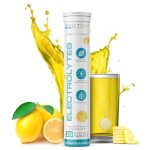Lighting your last cigarette is a moment many smokers dream of but getting there is a battle. Quitting smoking isn’t just about willpower; it’s a fight against one of the most addictive substances out there. For millions trying to break free, two paths stand out: going cold turkey method or turning to Nicotine Replacement Therapy (NRT).
One demands sheer determination. The other offers support through science. Each method has its advocates, and choosing the right one often depends on individual needs, lifestyle, and support systems. So, what’s the best way to quit smoking, NRT or cold turkey? Let’s break down both options.
What is the Cold Turkey Method?
The cold turkey approach refers to quitting smoking abruptly, without using any cessation aids or nicotine substitutes. One day you smoke, and the next day you stop completely.
Pros of Cold Turkey
- Immediate cessation: You remove all nicotine from your system quickly, which can lead to faster detox.
- No additional costs: There’s no need for patches, gums, or medications.
- Psychological empowerment: For some, quitting cold turkey strengthens their sense of willpower and self-control.
Cons of Cold Turkey
- Intense withdrawal symptoms: Without any nicotine substitutes, cravings, irritability, and anxiety can hit hard.
- Lower success rates: According to some studies, only about 3–5% of people who try to quit cold turkey stay smoke-free long-term.
- High risk of relapse: The sudden removal of nicotine can be overwhelming, leading many to return to smoking within a few days or weeks.
Cold turkey might work for highly motivated individuals with strong support systems, but for many, it can feel like an uphill battle.
What is Nicotine Replacement Therapy (NRT)?
Nicotine Replacement Therapy (NRT) involves using products like patches, gum, lozenges, nasal sprays, or inhalers that deliver controlled doses of nicotine without the harmful chemicals found in cigarettes. The goal is to gradually wean the body off nicotine while minimising withdrawal symptoms.
Pros of NRT
- Reduces withdrawal symptoms: NRT can help manage cravings and irritability by stabilising nicotine levels in the body.
- Improved success rates: Studies show that NRT can double the chances of quitting successfully compared to placebo or cold turkey methods.
- Flexible options: NRT comes in various forms to suit different preferences and smoking habits.
Cons of NRT
- Still uses nicotine: Though safer than smoking, NRT continues nicotine dependence for some period of time.
- Cost: While often cheaper than cigarettes, NRT products can still be expensive, especially over extended periods.
- Requires consistency: Success with NRT depends on proper usage and commitment to gradually tapering off.
Ultimately, NRT provides a practical and effective stepping stone toward quitting—helping you control cravings and ease withdrawal, but it still requires commitment and patience to succeed.
What’s the Best Method for You?
There is no universal answer. The best method depends on your personal smoking history, mental resilience, health conditions, and access to resources. Here are some tips to guide your decision:
- Try cold turkey if you smoke lightly, are highly motivated, and prefer a quick and cost-free method.
- Choose NRT if you smoke heavily, have tried and failed to quit before, or want a gradual and supported transition.
Consider consulting a healthcare provider to create a personalised quit plan.
Conclusion
Both NRT and the cold turkey method offer viable paths to quitting smoking. While cold turkey offers a quick and free option, NRT provides a more structured and statistically successful route. The key is finding a method that works for your lifestyle, mindset, and support system. Whatever you choose, remember that quitting smoking is one of the best decisions you can make for your long-term health.



